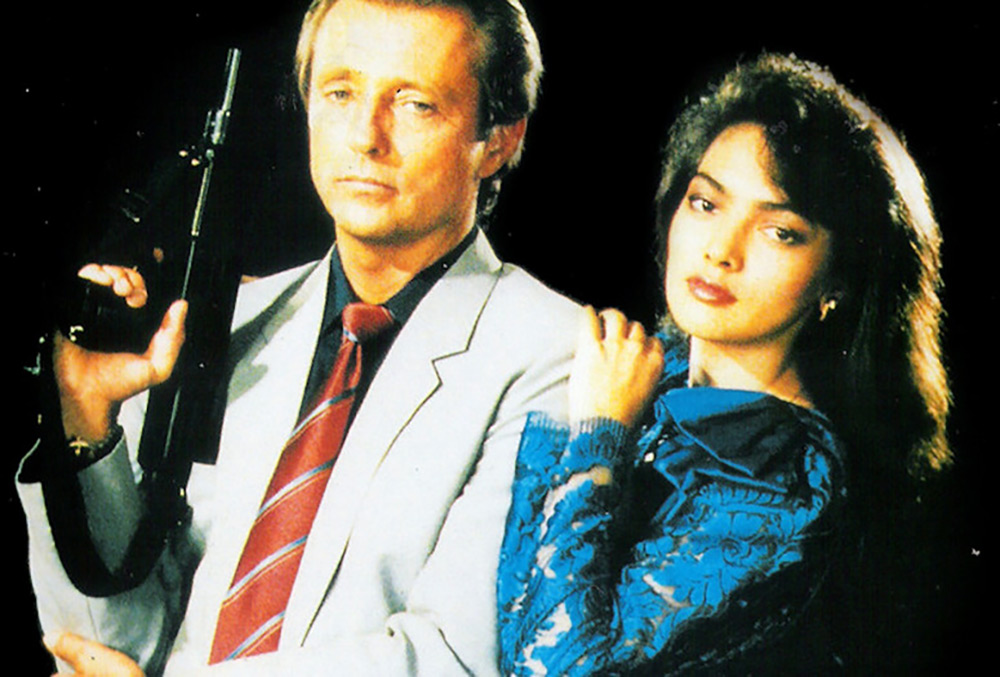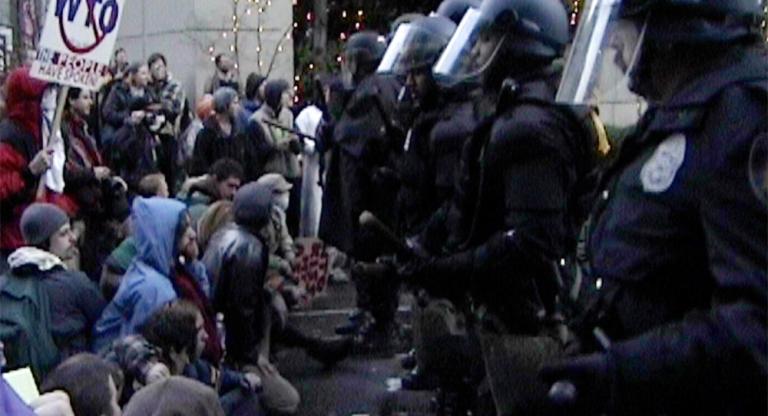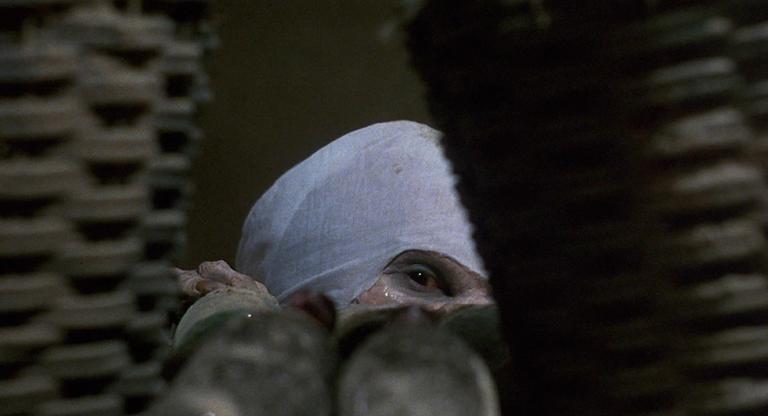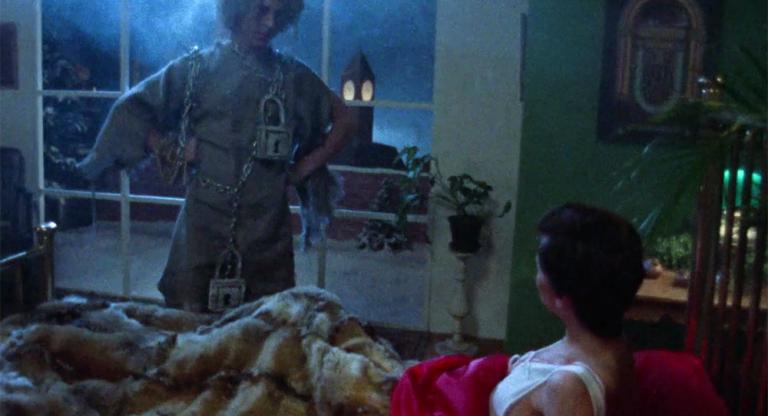Tonight David Schwartz’s A Theater Near You series at MoMA closes out with an evening spotlighting the volunteer-run programming collective and screening space Spectacle. The centerpiece is the likely first-ever U.S. 35mm screening of Indonesian action extravaganza American Hunter (1988), first presented at Spectacle by Screen Slate and Cinebeasts in August 2012 as part of an all-day marathon dedicated to its mononymous auteur, Arizal. In the spirit of the series’s intention to “give a sense of [cinemas’] unique styles and the preoccupations of [their] programmers,” and how they “respond to the interests and passions of their audience members,” I thought I would share a little bit about American Hunter, which I’m co-introducing tonight with Steve Macfarlane and other Spectacle volunteers, and how it became a unique linchpin and creative catalyst in the relatively early days of the cinema—a sort of mascot-movie, inside joke, and fulcrum of activity between programmers and regulars.
I had first come across the films of Arizal by searching torrent websites for random combinations of countries and categories—just as “Armenia”/“Documentary” introduced me to Artavazd Peleshyan, who forged a new poetic film grammar in films such as Seasons of the Year (1975), a rapturous depiction of animal husbandry in an isolated part of the countryside, “Indonesia”/“Horror” turned me on to Arizal’s Special Silencers (1982), an action-horror film about magic beans that cause tree branches to burst out of people’s stomachs in spectacularly gory ways. (Either would be fair game to show at Spectacle, whose founding mission was to show “lost and forgotten” films, irrespective of hierarchies of taste.) Despite its geysers of blood, motorcycle stunts, snake attacks, torture dungeon sequence, and martial arts brawls, Special Silencers is somewhat tedious. But it drew me further into his filmography, and I was gobsmacked by films like The Stabilizer (1984), Final Score (1986), and Double Crosser (1989).
In the text for the 2012 marathon, I described Arizal as “the Monet of cars spewing fire from their trunks barrelling nose-first, upside-down into other exploding vehicles while Anglo heroes arc through the flames like star-spangled ropes of jism spewing bullets from a musclebike.” Each of his pure action films respond to the tropes of recently released Western action films like Rambo: First Blood Part II (1985), Commando (1985), and The Delta Force (1986), fusing brawny American action iconography with the outlandish villains and technology of James Bond films (the machinegun-mounted motorbike assault in Final Score, the hawk perched on the shoulder of American Hunter’s villain, that film’s entire conceit of retrieving “the microfilm,” which could “bring the western world to its knees”). And yet despite working with fewer resources and no stars (Peter O’Brian, who appears in nearly all of them, is best known for playing the lead role in The Intruder, aka “Rambu”), there is something about these films’ resourcefulness that lends an overall feeling of surpassing their inspirations. They have extreme gumption.
In this sense, I felt they were spiritually aligned with Spectacle, where we had determined early on to only show films that we could clear permissions-wise, or which were so neglected and obscure that they seemed impossible to trace. On the former count, it meant working with distributors and filmmakers who were sympathetic to our radical ethos. (One story in Spectacle lore concerns a volunteer who reached out to Blaine Dunlap about showing his documentaries, and received a response excoriating institutional film programmers for short-changing filmmakers. Before the volunteer could respond, he received a followup from Blaine apologizing, saying he had looked at pictures of Spectacle online, and would be honored to have his films shown there.) On the latter count, it meant showing low-resolution VCD bootlegs of VHS rips of movies dubbed into English with burned-in Dutch or Japanese subtitles. The imperfect presentation of films that were, in the case of Arizal, themselves imperfect reflections of mainstream cinema seemed to fuse with the space, a gutted former bodega fitted with a DIY screen, consumer projector, perma-“borrowed” chairs, and wheezing Mac Mini. It was a holistic programming, presentation, and viewing experience.
The Arizal Marathon took place August 18, 2012 as a companion to Spectacle’s Summer of Shrapnel series, which included a number of gnarly .avi files of then-obscure films that have—unlike any of Arizal’s films, save Special Silencers—since been restored by boutique Blu-ray labels and are currently streaming on Tubi in heretically clean 1080p. The marathon was co-presented with Cinebeasts, the brainchild of Macfarlane and friends, whose eclectic programming had included several lo-fi action films at 92YTribeca and Spectacle. With our micro-audiences combined, it seemed like we could pack the thirty seats easily. For the first screening, exactly one person showed up, the indefatigable cinephile David Wilentz. It’s possible he was also the only audience member for the second and third.
The tone changed after the evening “protein break” and the 6:30pm screening of American Hunter, for which about ten times as many people showed up, bringing our numbers to nearly one dozen. Spectacle did not yet have an HVAC unit, and the A/C did not work. The air was as sweltering as the streets of Jakarta. And it only got hotter when, within seconds of American Hunter starting, a Jeep ramped off the side of one skyscraper into the window of another, followed by a spray of submachine gun fire. For the next 90 minutes of car chases, fist fights, shoot-’em-ups, awkwardly clothed shower-sex scenes, house explosions, and castle explosions, we were riveted—not even the eight-minute helicopter chase scene set to a monotonously looping danger-synth score could abate our excitement. When the lights went up, we knew without saying it that we had been bonded for life.
With the 2012 election between Barack Obama and Mitt Romney reaching a fever pitch (the Arizal marathon took place two months before the “binders full of women” remark), we decided to put American Hunter into midnight rotation, showing it at least once a month for the duration of the next presidential term. This was also a nod to American Hunter star Christopher Mitchum’s own 2012 Republican primary campaign for California's 24th congressional district seat. (In 2014, he reached the general and received 48% of the vote—Hunter bump?) In order to promote the screening we needed to produce a trailer, and for this we turned to artist C. Spencer Yeh, who at this time had just entered into the fold as a volunteer trailer editor. On September 30, 2012, I wrote to him formally asking him if he would cut the trailer. He responded with an email that simply read, “Imagine sitting at your computer, pointing to the stands”.
On October 5, 2012, Yeh emailed Spectacle programmer Mark D. Freado Jr. and I a link to a .zip file containing what is now widely recognized by the tight-knit yet influential Spectacle community as one of the greatest works of moving image art of the 21st century: the American Hunter trailer. “Just hit that point of having to let go, or else tweak forever, so here it is,” he said. One minute later, at 6:39pm, Freado responded, “oh man oh man oh man oh man i can't wait to watch this.” Three minutes later, at 6:42pm, Freado followed up with, “holy shit this is incredible. i'm gonna watch this like 50 times.” At 7:30pm, I chimed in on the thread from my phone: “Fuck the internet at spectacle went out”. Freado replied saying that he would bring it over on a thumb drive so it could be shown at the theater that evening. The thread concluded with Yeh pasting a link to a YouTube video.
The trailer was shown before nearly every screening for the foreseeable future, and at Spectacle, its reputation as a work in its own right has arguably outstripped the film itself. Virtually every line quoted in the trailer is now burned into the lexicon of many regulars and volunteers: “This stuff is too hot for you.” “So we have put everything on this one copy of microfilm…” “Start the engine!” “We hardly know each other, but still I think I already love you.” “Let’s just say, I hunt bad guys.” “Don’t fuck with me! You just find the microfilm!” “Maybe Jake Carver has the microfilm…” “Ok, die a motherfucking nobody!” “I’ve been looking forward to this for a long time.” “Looks like you just don’t know how to die.” “Well, why don’t you show me?”
Audience members began to message Christopher Mitchum on Facebook seeking more information about American Hunter, usually to no avail. In 2014, one of Spectacle’s regulars, Craig (who had a Facebook account under the name “Robert”) shared the trailer with him: “I don't know if you have seen this, but you've become quite the phenomenon at this theater,” he said. “they made their own trailer for that movie, and a couple of your other movies, and you have a small but dedicated following who show up anytime they play one of your films.”
For the first and only time, Mitchum responded: “WHere are you, Robert?” [sic]
“New York City,” Craig replied.
From there the trail went cold.
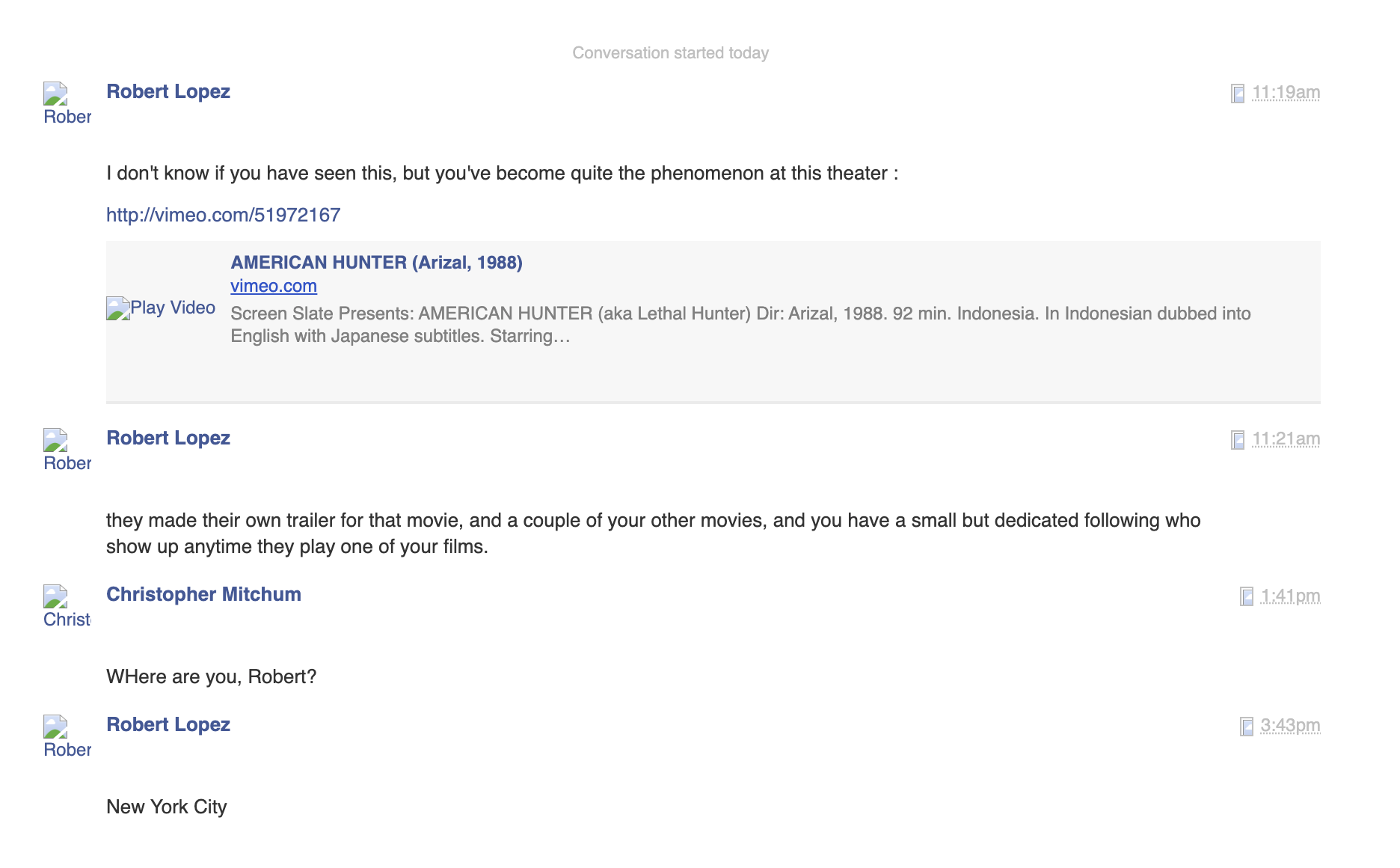
For more than a decade, it appeared that any film elements related to American Hunter were lost. Occasionally, a new analog video master with slightly improved video quality or no hardburned subtitles would appear in a fanmade greymarket DVD release. But in 2023, Switzerland-based Fokus Media managed to track down a 35mm print and many other video, sound, and promotional material. In consideration for the A Theater Near You series, Spectacle volunteer Liz Purchell pointed Macfarlane to this information, and Macfarlane subsequently arranged for this screening—likely the first, most pristine 35mm presentation of American Hunter ever made, premiering at the Museum of Modern Art.
Those of us who have spent the last 13 years in Hunter studies stand at a crossroads. What does the appearance of this film print mean for those of us accustomed to viewing the film in a DivX-encoded 480i file with burned-in Japanese subtitles? Does scraping away the digital dint and showing Arizal’s magnum opus in one of the world’s preeminent cultural institutions soften the affinities between the stray genre film and misfit microcinema? Or are American Hunter and Spectacle experiencing an exhilarating, shared come-up? We don’t yet know the answers to these questions—but we may learn them tonight. I’ve been looking forward to this for a long time.
American Hunter shows on 35mm at the Museum of Modern Art with a selection of Spectacle trailers and introductions by Steve Macfarlane, Jon Dieringer, and Spectacle volunteers tonight at 6:30pm. The film also shows Friday at 4:00pm.
